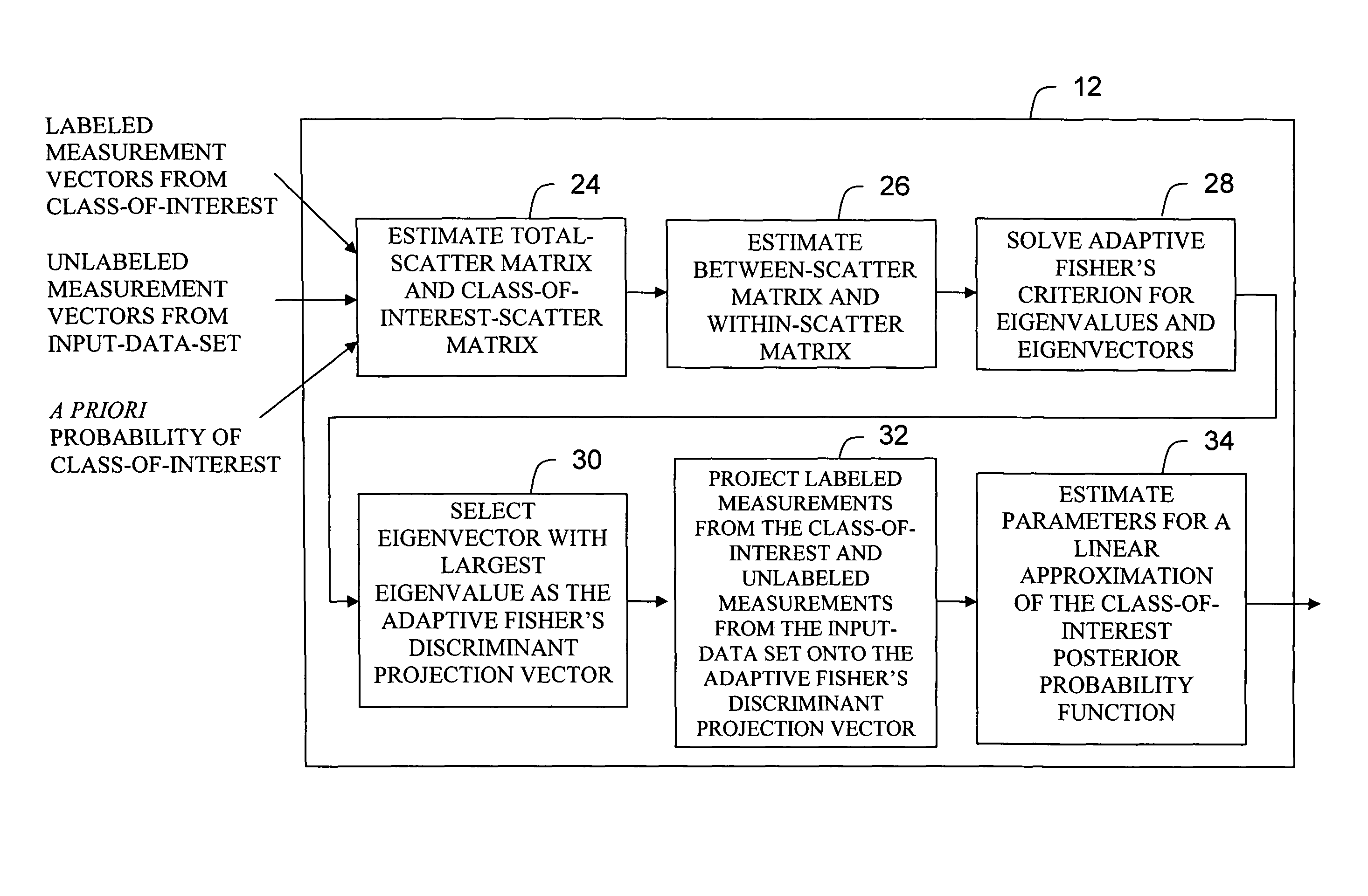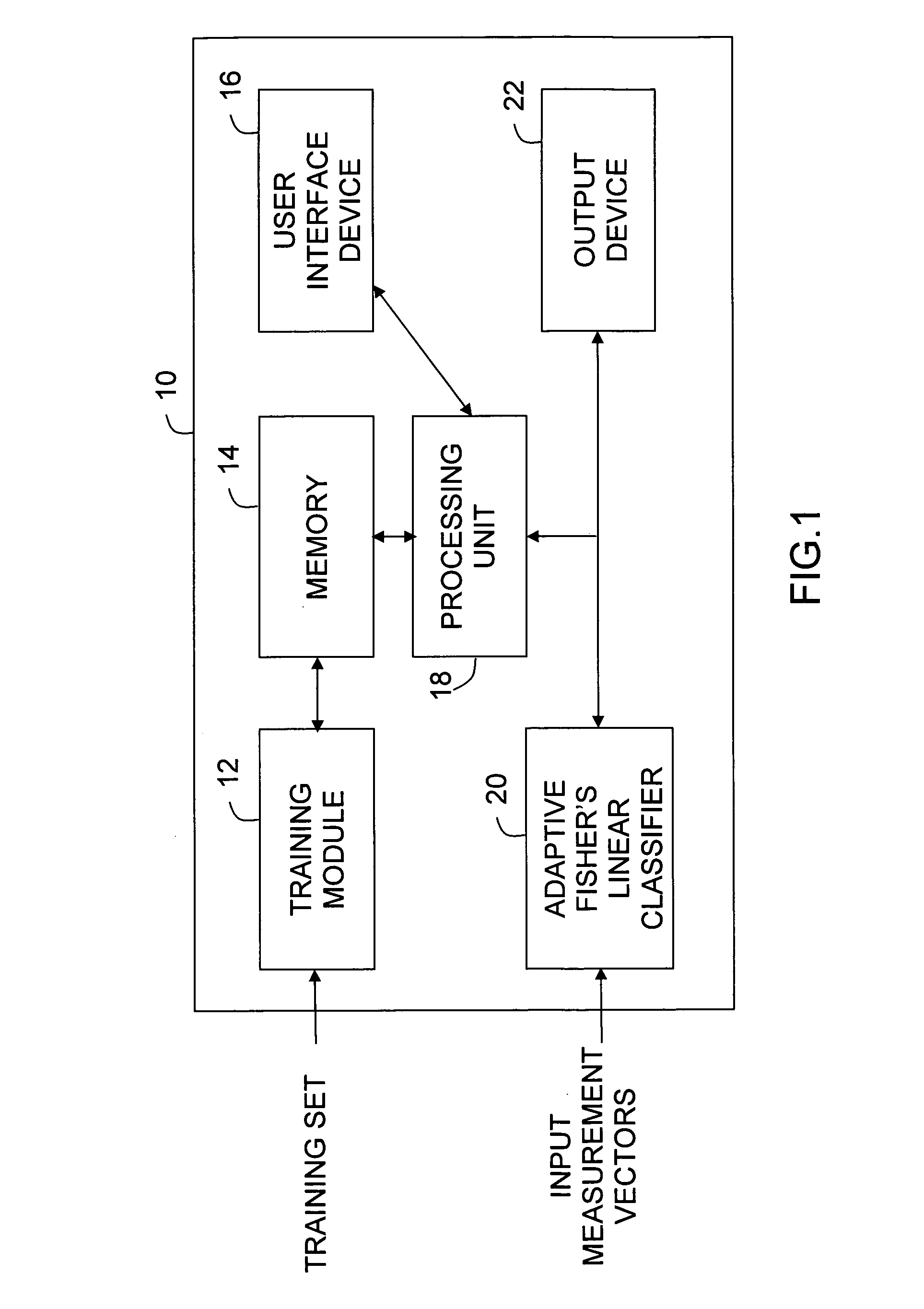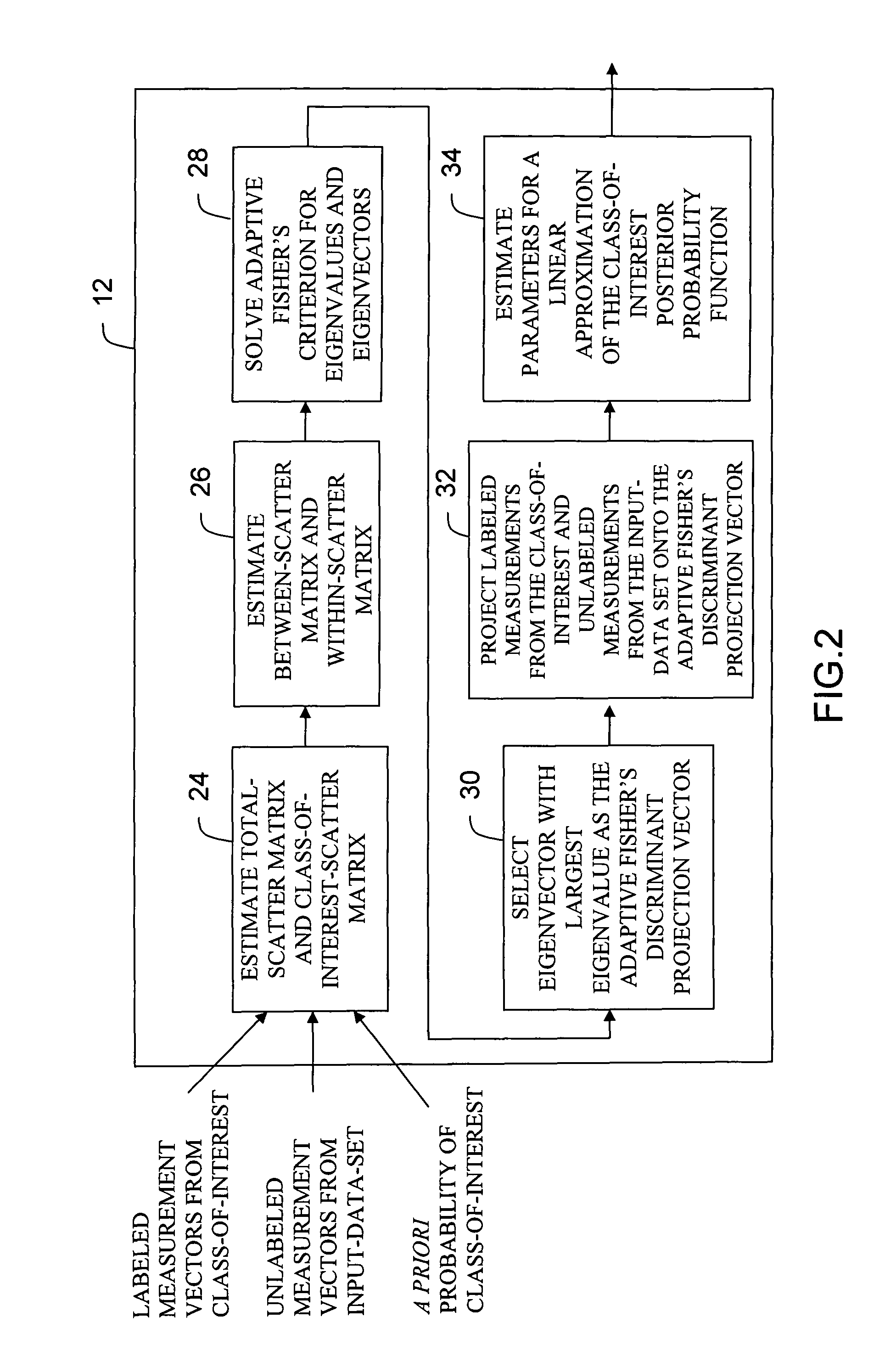Adaptive fisher's linear discriminant
a fisherman and linear discriminant technology, applied in the field of adaptive fisherman linear discriminant, can solve the problems of difficult to obtain labeled training samples, time-consuming, difficult, and expensive, and achieve the effect of ensuring the minimum probability of error, reducing the cost of obtaining labeled training samples, and reducing the probability of error
- Summary
- Abstract
- Description
- Claims
- Application Information
AI Technical Summary
Benefits of technology
Problems solved by technology
Method used
Image
Examples
Embodiment Construction
Description of the Standard Fisher's Linear Discriminant Method
[0052]The Fisher's criterion is a well known criterion for linear discrimination [R. O. Duda and P. E. Hart, Pattern Classification and Scene Analysis, New York: John Wiley & Sons, 1973, pp. 115-123]. The Fisher's linear discriminant is normally used in fully supervised pattern recognition applications to classify data into two classes where training samples are available for both classes. The standard Fisher's linear discriminant is defined as follows:
[0053]Suppose we are given a set of n d-dimension measurement vectors X1,X2, . . . Xn where n1 samples are in the subset Λ1 labeled class 1 and n2 samples are in the subset Λ2 labeled class 2. The vector Xi will be called the measurement vector or simply a sample or a pattern and will be denoted as Xi=(x1,x2 . . . xd)T where d is the number of measurements or the dimensionality of the measurement space. If we form a linear combination of the components of X, we obtain the ...
PUM
 Login to View More
Login to View More Abstract
Description
Claims
Application Information
 Login to View More
Login to View More - R&D
- Intellectual Property
- Life Sciences
- Materials
- Tech Scout
- Unparalleled Data Quality
- Higher Quality Content
- 60% Fewer Hallucinations
Browse by: Latest US Patents, China's latest patents, Technical Efficacy Thesaurus, Application Domain, Technology Topic, Popular Technical Reports.
© 2025 PatSnap. All rights reserved.Legal|Privacy policy|Modern Slavery Act Transparency Statement|Sitemap|About US| Contact US: help@patsnap.com



